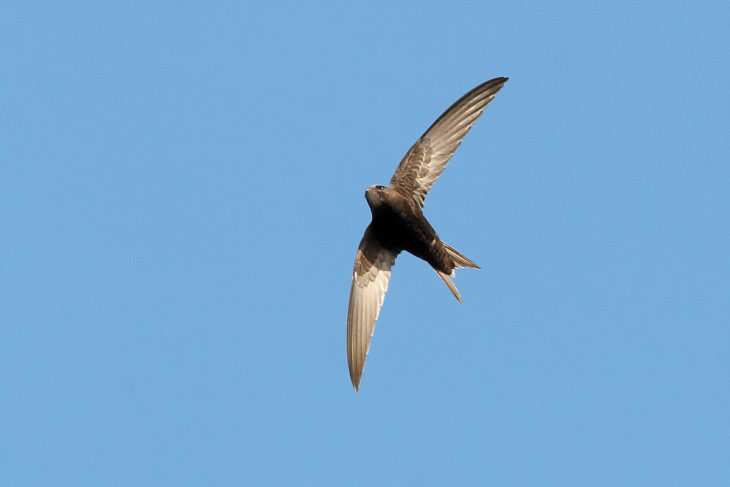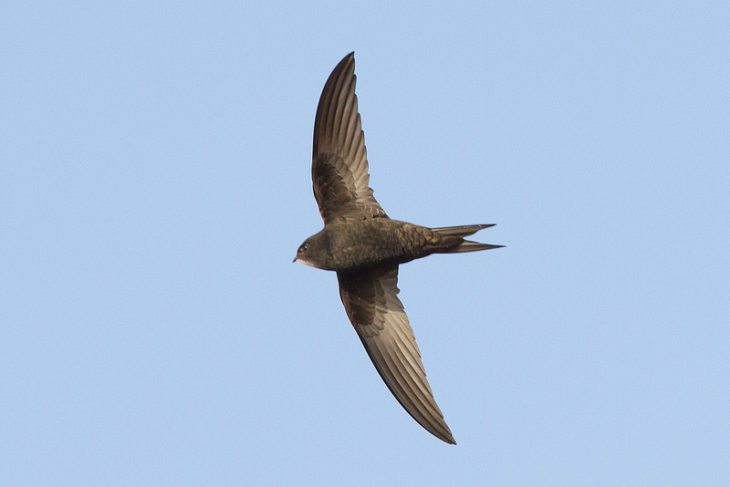How to help our declining swifts
I consider myself extremely lucky when I step out the back door on a summer’s evening and can hear the distinctive, screeching call of the common swifts as they swirl around in the air above.
This beautiful sooty-brown coloured bird with its small white throat patch, deeply forked tail and sickle-shaped, sharply-pointed wings spends most of its time on the wing.

They feed, preen and mate in the air and only land to feed their young or to roost. As they are found in and around our towns and cities they can provide an immediate and close connection between people and nature.
Using British Trust for Ornithology (BTO) ringing data, and more modern technology such as geo-locators, we are gaining much greater insights into the migration routes and patterns of our swifts.
These birds have one of the longest migration journeys in the world covering around 22,000 kilometres (13,670 miles) every year as they travel to, or from, their wintering grounds in central Africa.
They can cover this distance in a remarkable five days.
Common swifts are one of 24 Priority Species that the Scottish Wildlife Trust has highlighted as needing urgent conservation action. Not ubiquitous throughout Scotland and their distribution is patchy in the more north-western parts of the country. Britain has even dedicated a national week in support of swifts, which ends today.
You might be wondering why there’s a need to raise awareness about a bird that spends only three months of the year in Scotland. However, their numbers have declined in Britain by a third since 1995 and we can take action here to help them.
Swifts are listed as ‘amber’ in the most recent review of Birds of Conservation Concern 4, but it is predicted that if recent declines continue that they will move to the ‘red’ list, making them a species of the highest conservation priority.
The reasons for the decline of our swifts are multi-faceted and not yet fully understood, however, like most wildlife the essentials of food, water and cover for (nesting and shelter) are required to survive.
Changes in modern house building techniques and the knocking down or renovation of older buildings does restrict the availability of important nesting spaces. Swifts are also dependent on aerial insects for their food supply and can fly up to 900 kilometres (560 miles) in a day.

As has been widely reported in the press lately many insect populations are crashing in numbers – due to pollution, habitat changes, overuse of pesticides, and climate change. The reduction in insect numbers reduces the food supply available for our swifts and their young fledglings.
Despite these pressures the swift is one of the few endangered species that individuals and communities can really can help, either in their own properties or neighbourhoods. Simply by taking steps to leave the nests alone, make new holes to retain access to nesting areas, and by using externally-fitted nest boxes.
You can also help improve our understanding of what’s happening to our swifts by uploading any records of swifts that you see or hear in the Bird Track Apps. Or consider joining and supporting one of the Swift Local Network Groups to help advocate swift friendly building practices to local developers.
I for one don’t want to see swifts disappear from our towns and cities and to lose that close connection with nature.
Susan Davies, Director of Conservation
Help protect Scotland’s wildlife
Our work to save Scotland’s wildlife is made possible thanks to the generosity of our members and supporters.
Join today from just £3 a month to help protect the species you love.
Preface
I consider myself extremely lucky when I step out the back door on a summer’s evening and can hear the distinctive, screeching call of the common swifts as they swirl …
